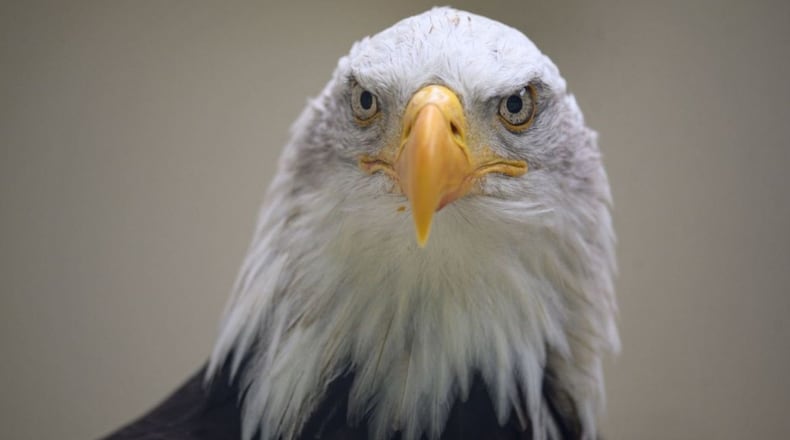Editor’s note: This story has been updated to reflect the survey was the first statewide survey in five years.
Georgia wildlife officials counted a record number of active bald eagle nests in the state this year, but an outbreak of bird flu on the coast has scientists worried for the iconic species’ fragile recovery.
The first statewide bald eagle nesting survey in five years found 229 active nests, an increase over the previous high of 218 in 2017, according to the Department of Natural Resources.
Of the nests surveyed this year, 146 produced eaglets, with 227 eaglets total counted. While most successful mating pairs produced one or two offspring, one standout raptor couple near Columbus raised three eaglets to flight, the agency said.
Not all regions saw equal success, however. Bald eagles prefer to live near water, and on the coast, the number of successful nests plummeted by about 30 percent, a drop scientists attributed to highly pathogenic avian influenza, commonly known as bird flu.
David Stallknecht, a University of Georgia veterinary medicine professor with Southeastern Cooperative Wildlife Disease Study, called the survey results “encouraging for this year.” But he cautioned that there were several factors that made this strain of bird flu more problematic than previous ones.
“Right now, we’re waiting and holding our breath to see what’s going to happen,” he said. “This one’s pretty much adapted to wild birds, and it’s spreading rapidly in wild bird populations.”
Much will depend on whether the migratory waterfowl that appear to carry the disease bring it back with them when they return to Georgia in fall and early winter, said Bob Sargent, the program manager who led the survey for DNR.
“This is far and away the worst effect we have seen of the virus on wild bird populations,” said Sargent.
Despite the threat from bird flu, Sargent was cautiously optimistic about the rebound of a species that came close to extinction 50 years ago. In 1981, Georgia had just one successful bald eagle nest, according to DNR.
“The numbers have come a long way, but the species is still threatened,” said Sargent. “The numbers aren’t so abundant that we feel comfortable saying that, you know, the population is completely safe from disease outbreaks, from environmental disturbances.”
Bald eagles nearly disappeared in the last century due to habitat loss and widespread use of the pesticide DDT. Conservationists largely credit their comeback to the government ban on DDT in 1972 and the passage legislation such as the Endangered Species Act and the Clean Water and Clean Air acts.
Bald eagles were taken off the federal list of endangered species in 2007 but are still classified as “threatened” in Georgia. The birds are protected under state and federal law.
Georgia’s efforts to protect bald eagles and other plant and animal species are supported in part by purchases of the state’s eagle and monarch butterfly license plates and from renewals of older hummingbird plates.
Report bald eagle sightings
Georgia Department of Natural Resources scientists encourage the public to report eagle nests as resident reports help make counts more accurate. Reports cane be made at https://georgiawildlife.com/bald-eagle, (478) 994-1438) or bob.sargent@dnr.ga.gov.
About the Author
Keep Reading
The Latest
Featured



